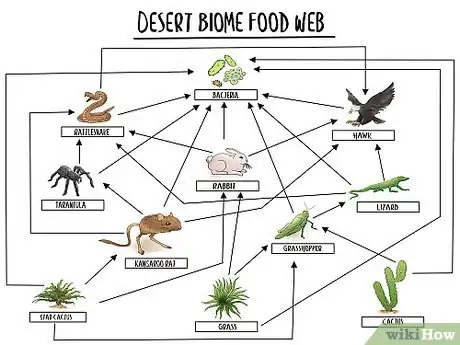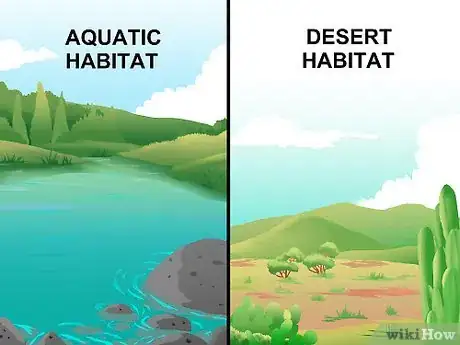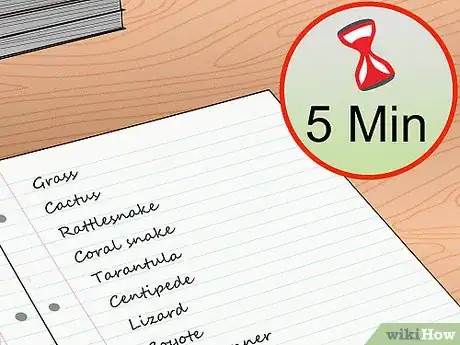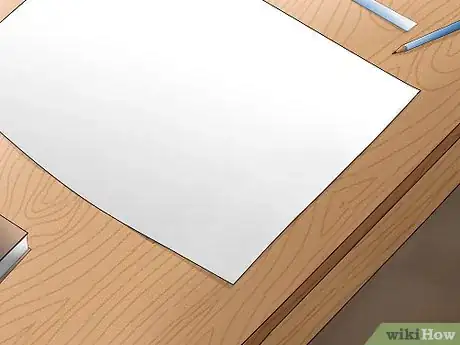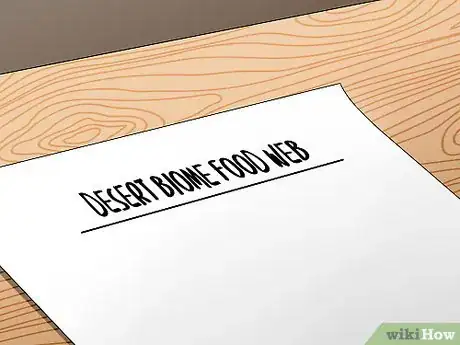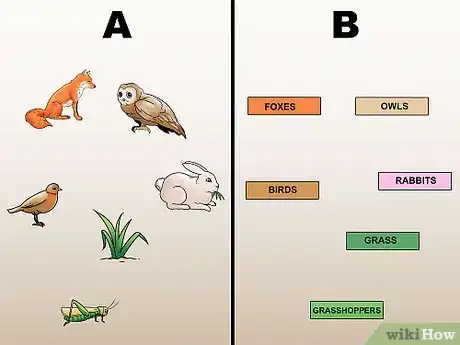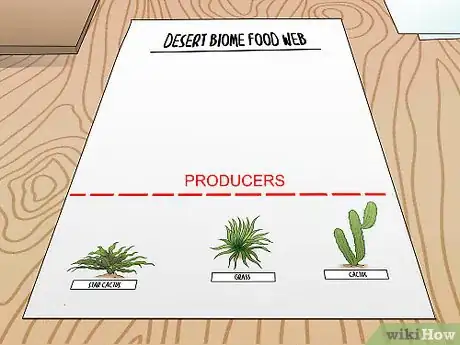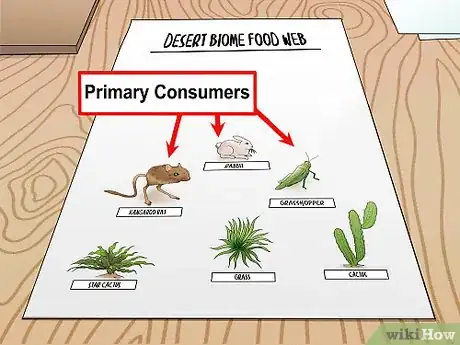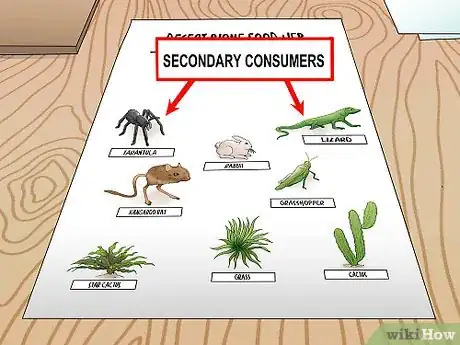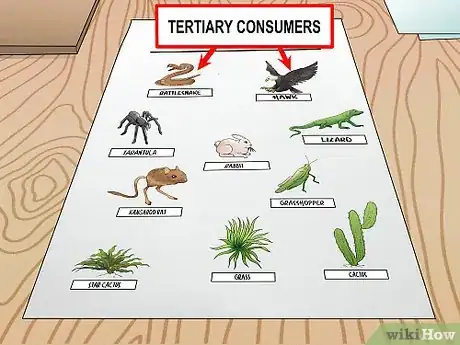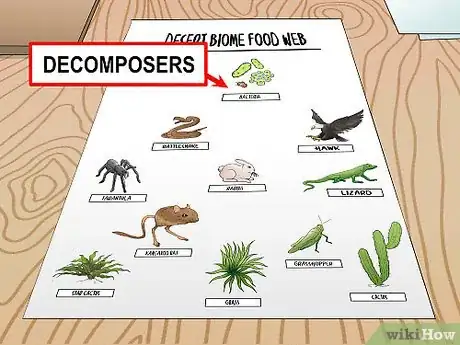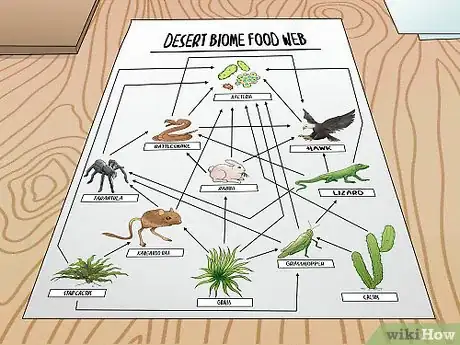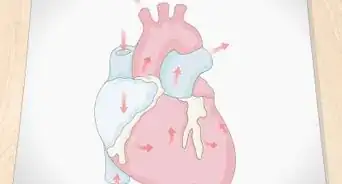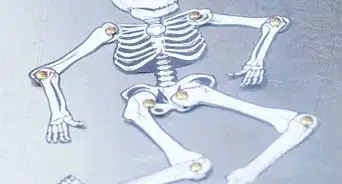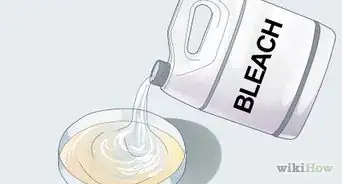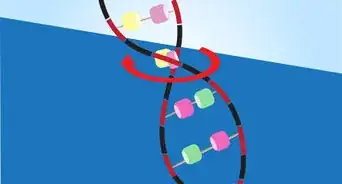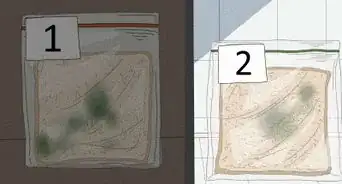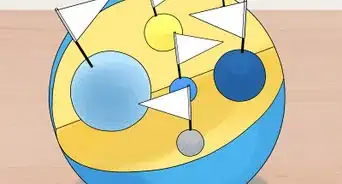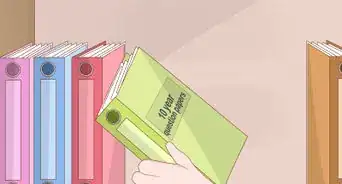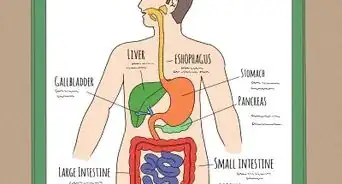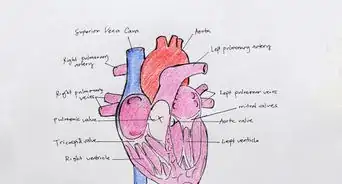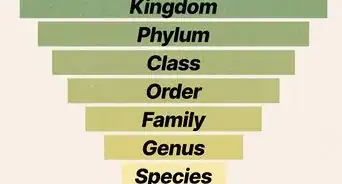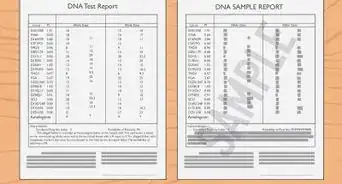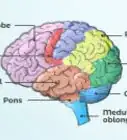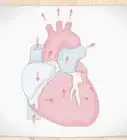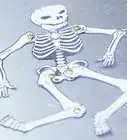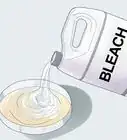This article was co-authored by wikiHow Staff. Our trained team of editors and researchers validate articles for accuracy and comprehensiveness. wikiHow's Content Management Team carefully monitors the work from our editorial staff to ensure that each article is backed by trusted research and meets our high quality standards.
This article has been viewed 690,887 times.
Learn more...
Creating a food web is a really great way to learn more about how organisms and animals live in their natural habitats. While a food chain shows how ecosystems function in a linear way, a food web is a more visual approach with multiple animals connected to one another. To create a food web, write out the primary producers, herbivores, omnivores, and carnivores for the chosen habitat. Connect them with arrows showing both predator and prey. The final product may look like an actual web or map. It can be hard to do this so don't stress out! If this is for a class grade, make sure to do your best on this.
Setting up Your Web
-
1Choose a particular food web habitat. It’s just not possible to list out all animals, plants, or organisms all around the world, so focusing on one type of habitat can be super helpful. Your teacher might assign you a particular habitat to make a food web about. Otherwise, you could select a natural spot near your hometown, such as a lake, forest, creek, beach,river, or field![1]
- For example, for a broader habitat, you might decide to focus on aquatic or desert spaces. Narrowing down your habitat by location, such as the Santa Fe desert, can make it even easier to construct a simple food web.
-
2Write down a list of organisms in your habitat. Get out a pad of paper and brainstorm a long list of every single organism that you can think of that lives in the chosen habitat. Include everything from large to small creatures and even some plants! It might be really helpful to look at a science book focusing on your particular habitat.[2]
- It’s okay if your list doesn’t include every creature to live in the chosen habitat. For example, if you have 30 minutes to create the food web, only spend 5 minutes maximum creating this initial list.
- If you are studying the dry desert, you might list out lizards, cacti, snakes, and spiders.
- If you are studying the vast ocean, you might list out fish, sharks, and even plankton!
Advertisement -
3Get a really large piece of paper to create your food web! Since food webs aren’t linear, they can require a great deal of space, depending on how many animals and plants you include. Choose a piece of paper that'll give you plenty of space for names and possibly even illustrations. You can also use a computer drawing program to create your web.[3]
- If you run out of paper space while creating your web, you can reduce the size of your font or even write on the back of the page, too.
-
4Title your food web. At the top of your food web, write out your title in large font. Your title should be a good description of your entire food web. Mentioning the type of habitat that you are studying is usually a great idea.
- For example, you might title your work, “A Desert Food Web.” You could also go with, “A Circle of Life in the Ocean,” or “A Jungle Food Web.”
-
5Decide whether to label, illustrate, or do both for organisms. You want to use a single, uniform system of identification for your food web. You could include small illustrations, but they will take more time to produce. Otherwise, simply labeling the organism by its given or scientific name is fine.[4]
- For example, a barn-owl in your chart could also be labeled by its scientific name, “Tytonidae.”
Mapping Out Your Initial Web
-
1Put all of your producers on the page. A primary producer is an organism that creates its own food by processing sunlight or chemical energy. They are the building blocks of every food chain or web. Space out each producer, so that they are not touching one another on your page.[5]
- For example, if you are drawing a food web of the desert, you might include cacti as a producer. It survives by using photosynthesis to convert sunlight to energy.
- Another name for primary producers in ecosystems is autotrophs.
- Some people like to put primary producers at the bottom of the page to create a visual “foundation” for their web. But, this isn’t necessary. You can put your producers anywhere on the page, as long as you leave some space between them.
-
2Place your primary consumers on the page. This is the next stage of your food web. Primary consumers are creatures that feed and prey on producers. These are always plant-eaters, also known as herbivores. As you did with the producers, try to come up with multiple primary consumers.[6]
- Look at your initial organism list to identify any possible primary consumers. You can also ask yourself, “Which creature would eat the producers I’ve listed?”
- For example, in a desert food web, the cacti and grass (both producers) could get eaten by grasshoppers (primary consumer).
- Because a food web isn’t supposed to resemble a list, the exact placement of each group of organisms isn’t as important as leaving enough room to draw arrows between them.
-
3Add in your secondary consumers. These are animals that are either meat-eating carnivores or meat and plant-eating omnivores. Look over your list when selecting these creatures and then add them in the anywhere on your page.[7]
- For example, in a desert food web, a rat could be a secondary consumer. It is an omnivore that could eat both the grass and grasshoppers.
Including the Final Web Details
-
1Include your tertiary consumers and beyond. These are creatures that prey upon the secondary consumers, primary consumers, and producers. They might not eat animals from all 3 of these categories, but they must eat secondary consumers to be considered tertiary. Beyond that, you can add animals that prey upon tertiary consumers and so on.[8]
- You can add as many levels or layers as you like to your food web. The animals that are the final predators, almost always carnivores, are considered the alpha predators of your web.
- For example, in a desert food web, a snake could be a tertiary consumer. It preys upon rats. A hawk could be a quaternary consumer, as it preys upon snakes.
- If you’d like your web to resemble more a pyramid design, you’ll want to start with producers on 1 side of the page and end with predators on the opposite end.
-
2Create more complexity by adding in detritivores or decomposers. These are all creatures that feed upon dead organisms, thus completing the final chain of life and transfer of energy. A detritivore, such as a worm, actually eats deceased animals. A decomposer, such as bacteria, helps to fully break down the carcass of the dead creature.[9]
- It’s important to note that decomposers usually complete work that is invisible to the naked eye. However, they are still a critical part of the food web system.
- These organisms can be placed anywhere on the page.
-
3Draw arrows between organisms indicating the transfer of energy. This is when your web will really start to look like a web. Create a series of arrows connecting predator and prey. The arrow should start with the animal that is eaten and move to the animal that does the eating. Each animal or organism can have multiple arrows beginning or ending from it.[10]
- For example, in a desert food web, you’d start 1 arrow at the grass and connect it to the grasshoppers. You’d start another arrow at the grass and connect it to the rats, too.
- This is a primary difference between a food web and a food chain. A food web is a bit more chaotic in that it can show multiple different arrows between creatures. Your final web will not be linear.
- You can also color-code the arrows in a larger web. For example, color plant-eaten-by-animal arrows green and animal-eaten-by-animal arrows red.
- If you are drawing your food web digitally, then you may need to use a “shape” tool to create arrows.
Community Q&A
-
QuestionWhat are secondary consumers?
 Community AnswerThe first animal to eat the producer in a food chain (not web) is usually an herbivore because it eats the producer (plants), the secondary consumer is a carnivore because it eats the primary consumer (the animal).
Community AnswerThe first animal to eat the producer in a food chain (not web) is usually an herbivore because it eats the producer (plants), the secondary consumer is a carnivore because it eats the primary consumer (the animal). -
QuestionDon't you need pictures sometimes?
 Community AnswerNo, you don't have to put pictures in it as long as the arrows or the diagram is neatly written. Pictures can help make your web look nicer though.
Community AnswerNo, you don't have to put pictures in it as long as the arrows or the diagram is neatly written. Pictures can help make your web look nicer though. -
QuestionDo I put the sun at the top or bottom?
 Robin SagerCommunity AnswerUnlike a food chain or pyramid, you can place your sun anywhere on the page. The key is to make the connections between the sun and the animals or organisms. If you are trying to recreate an exact environment on your page, then placing the sun at the top would obviously be best.
Robin SagerCommunity AnswerUnlike a food chain or pyramid, you can place your sun anywhere on the page. The key is to make the connections between the sun and the animals or organisms. If you are trying to recreate an exact environment on your page, then placing the sun at the top would obviously be best.
Warnings
- If you are creating your web on paper, it might help to do a first draft in pencil. This way you can erase any arrow errors that you make and correct them without a problem.⧼thumbs_response⧽
Things You’ll Need
- Paper
- Markers, pens, or pencils
- Computer drawing program
References
- ↑ https://www.education.com/science-fair/article/desert-food-web/
- ↑ https://www.education.com/science-fair/article/desert-food-web/
- ↑ https://www.education.com/science-fair/article/desert-food-web/
- ↑ https://www.education.com/science-fair/article/desert-food-web/
- ↑ https://nrich.maths.org/7592
- ↑ https://www.khanacademy.org/science/biology/ecology/intro-to-ecosystems/a/food-chains-food-webs
- ↑ https://www.khanacademy.org/science/biology/ecology/intro-to-ecosystems/a/food-chains-food-webs
- ↑ https://www.khanacademy.org/science/biology/ecology/intro-to-ecosystems/a/food-chains-food-webs
- ↑ http://nsgl.gso.uri.edu/michu/michue08004.pdf
About This Article
To draw a food web, start by making a list of all the organisms in your chosen habitat, including plants and animals. Then, on a large piece of paper, write or draw the producers, like grass, trees, and cactuses, which create their own energy, along the bottom. Above that, add your primary consumers that eat the producers, such as rats and grasshoppers. When you’ve done that, add all of the secondary consumers that eat the primary ones, and then any tertiary consumers on the top. Finally, draw arrows between the organisms to show which way the energy goes. For example, if a rabbit eats grass, draw the arrow going from the grass to the rabbit. For more tips, including how to add decomposers, like bacteria, to your food web, read on!
